Feline cerebellar hypoplasia is a neurological disorder that occurs when a cat's brain does not develop properly in the womb. This disorder is congenital, meaning it is present at birth. A cat with cerebellar hypoplasia has an underdeveloped cerebellum, a part of the brain located in the back of the brain beneath the cerebrum. The cerebellum is responsible for coordination, spatial awareness, and fine motor skills. The characteristic symptoms of this disorder lead to its common name of "wobbly cat syndrome."
Feline cerebellar hypoplasia is not typically a life-threatening condition, but it can have a negative impact on the cat's quality of life depending on the severity.
What Is Feline Cerebellar Hypoplasia?
"Hypoplasia" is a medical term meaning underdevelopment or smaller size than normal. "Cerebellar" refers to the cerebellum (the word means "little brain" in Latin), which is located at the back, lower portion of the brain. The cerebellum in cats and other mammals mostly handles motor movements, particularly balance, the smooth performance of voluntary movements, and motor learning. In cerebellar hypoplasia, which occurs not only in cats, but also humans, dogs, cows, and many other mammal species, the cerebellum is underdeveloped from birth, leading to various symptoms of motor dysfunction.
Feline cerebellar hypoplasia is not a painful condition, nor is it contagious. Fortunately, cerebellar hypoplasia does not get worse over time. The condition will also not improve over time. However, most kittens learn to adapt as they age and can live happy healthy lives. In many cases, it may seem that the condition has improved because the cat has done such a great job adapting to it. In severe cases, the cat may need a lot of assistance with normal tasks such as walking or using the litter box. This still doesn't mean the cat cannot experience a good quality of life.
Symptoms of Cerebellar Hypoplasia in Cats
Signs of cerebellar hypoplasia are generally first detected when the kitten begins walking, typically around four to six weeks of age. Cases of feline cerebellar hypoplasia range from mild to severe. Common symptoms include:
Cats with cerebellar hypoplasia often have trouble walking, running, keeping balanced, jumping, and locating objects. They often bob their heads and appear wobbly when walking. Some will experience splaying of their limbs or slide on their feet. They may have trouble focusing on objects and approaching them accurately, especially when it comes to litter boxes, waters bowls, and food dishes. Tremors often occur when the cat reaches for an object or focuses on something, such as a toy, food bowl, or even your petting hand.
What Causes Cerebellar Hypoplasia in Cats?
Because the cerebellum continues to develop and mature not only during fetal development but also during the first two weeks of a kitten's life, it is very vulnerable to disruption from a variety of causes. In the case of cerebellar hypoplasia in cats, the culprit is the feline distemper virus, a type of parvovirus that causes the disease panleukopenia. If the mother cat is infected with this virus during her pregnancy or receives a vaccination for feline distemper that's made with live virus, the virus can attack the developing nerves in the fetal kittens' growing cerebellums, leading to stunted development.
Feline cerebellar hypoplasia can also occur in kittens who become infected with the parvovirus before they are two weeks old.
How Do Vets Diagnose Cerebellar Hypoplasia in Cats?
There is no simple test to diagnose cerebellar hypoplasia in cats. However, your veterinarian may recommend a series of tests to rule out more serious conditions. Your vet will likely start with routine lab work like blood chemistry, complete blood count, and urinalysis. These tests may reveal metabolic problems, organ dysfunction, or abnormal cells in the blood or urine.
Your primary vet may refer you to a veterinary specialist, like a neurologist, to pursue further testing. The best way to rule out other major neurological conditions is for a veterinary specialist to conduct a CT or MRI scan. A cerebrospinal fluid tap may also be recommended to look for bacterial or viral infections. The CT or MRI may show brain abnormalities including but not limited to cerebellar hypoplasia.
However, advanced diagnostics are not always necessary. Perhaps your budget is tight or you don't want your cat to undergo a lot of testing. Your vet may be able to make a presumptive diagnosis based on your cat's symptoms, and then offer options for helping your cat lead a normal life.
How to Treat Feline Cerebellar Hypoplasia
There is no cure or direct treatment for feline cerebellar hypoplasia. Sadly, euthanasia may be the most humane option for cats with very severe cerebellar hypoplasia. The good news is that most cats with mild to moderate cerebellar hypoplasia can lead relatively normal lives with a little extra help from their owners.
For their own safety, cats with cerebellar hypoplasia should never be allowed to go outdoors. They should not be declawed, as they need all their claws to help keep their balance. Their nails should be kept a little longer than you would keep them on the average cat. This will help them gain traction around the house.
Cats with cerebellar hypoplasia do best with large litter boxes that are easy to get in and out of. Ramps placed in front of litter boxes and furniture can make it much easier for cats to access these areas. For safety, place baby gates at steps to prevent falls. Avoid giving easy access to very high places, as these cats are more likely to fall. Help create traction where there are slick floors by laying down yoga mats or foam pads. Use nonslip mats for the food and water bowls and keep a nonslip standing surface in front of the bowls to help your cat balance while eating. Wide bowls for food and water may be easier for cats to access.
Be sure to carefully introduce new cats and other pets to your cat with cerebellar hypoplasia. These cats can certainly live with "normal" animals, but they may be more vulnerable if the pets are not getting along. Supervise all interactions until you are sure they are used to one another. In general, it's best not to leave a cat with cerebellar hypoplasia alone with a larger dog. Dogs, especially those with higher prey drives, may perceive the cat as prey in distress and chase or attack out of instinct.
Prognosis for Cats with Cerebellar Hypoplasia
A cat with mild to moderate cerebellar hypoplasia may be more accident-prone than the average cat, but there's a high likelihood the cat can learn to adapt and compensate for the differences and live a long happy life. A little help from you will go a long way.
How to Prevent Feline Cerebellar Hypoplasia
It is not always possible to prevent feline cerebellar hypoplasia but to help reduce the chance of it occurring, make sure unspayed female cats are vaccinated against feline distemper before becoming pregnant. Should an unvaccinated cat become pregnant, wait until after the kittens are born to vaccinate against feline distemper.


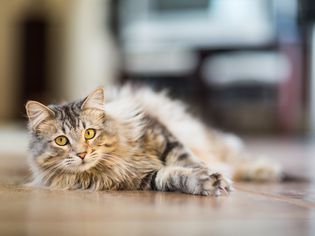
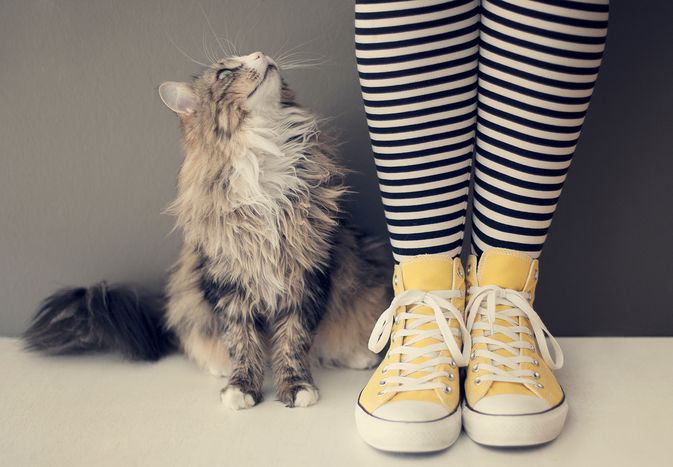

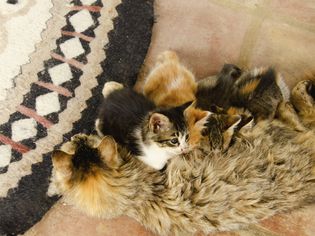
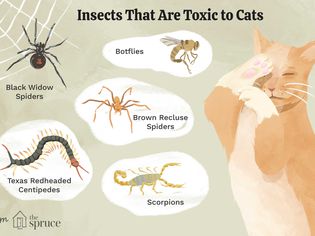
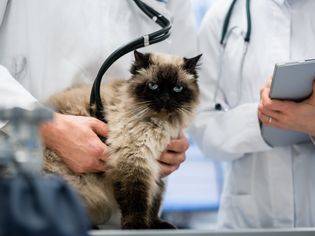
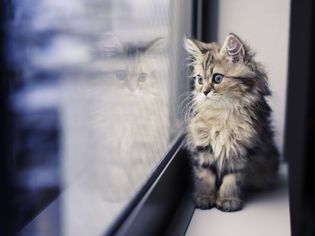

Comments on " Feline Cerebellar Hypoplasia" :